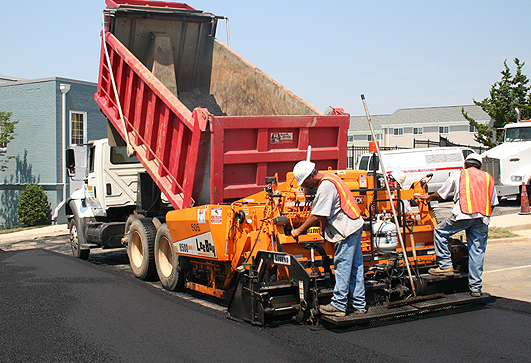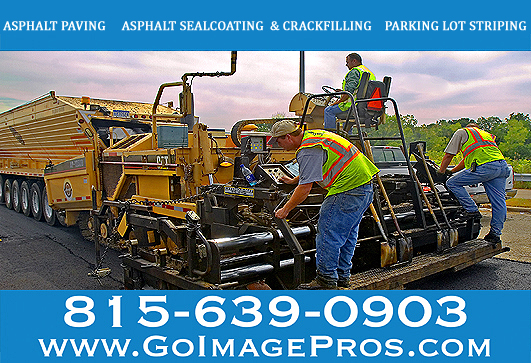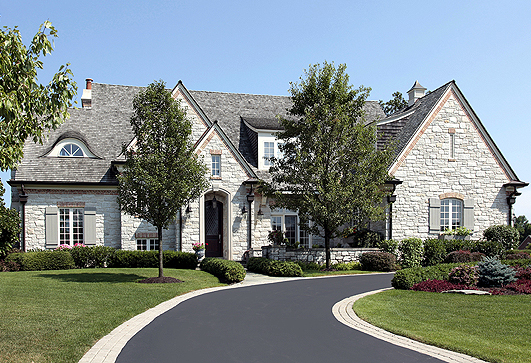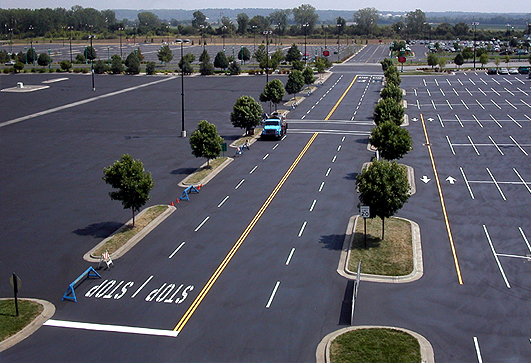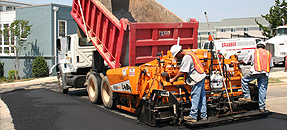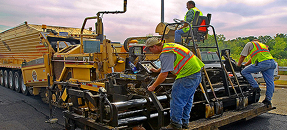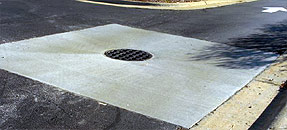Infrared asphalt repairs work best when applied to small pot holes, utility cuts, and wide cracks. It is also good for leveling frost heaves, seams, bird baths, adjusting manholes and water valves as well as creating swells in asphalt and patching tightly alligatored or cracked areas.
Infrared patching is not applicable to areas with severe sub-grade deformation, exposed pot holes, areas with gateloops, areas that are within 2 feet of painted metal or wood, areas inside of parking garages (due to height of truck), or areas adjoining landscape.
The infrared asphalt repair process uses infrared rays in order to heat existing asphalt in-place. Infrared rays are not visible to the human eye but are located between red and microwaves in the electromagnetic spectrum. Similar to microwaves, infrared rays produce heat deep inside an object and it is this characteristic that allows us to get deep penetration asphalt repair without causing burning, scaling, or separation of the asphalt from the aggregate.
In order to create the infrared rays, premixed gas and air are delivered under pressure to energy converters. The materials used in the converters combined with specific engineering procedures generate the maximum amount of rays with minimum convection heat produced. The rays are then channeled to the desired location through a series of reflective panels. The higher the concentration of rays directed to a specific area, the deeper the penetration and the more uniform the softening process is. Also, as much of the convection heat as possible is disposed of through louvers.
As you can see in our demonstration video (see below), the converters are lowered from the rear of our repair vehicle
and are fueled from propane tanks. These same tanks fuel our on-board asphalt holding units. It’s these holding
units that allow us to carry and maintain a ready supply of hot and fresh asphalt, even with cold outside air temperatures.
Seamless infrared asphalt repairs are one of the most innovative and intriguing asphalt repair methods available in the asphalt industry today. Existing asphalt can be heated, rejuvenated and reused - all while getting rid of the cracks and potholes that cause safety and legal hazards.
Unlike the old "Saw cut - Remove - Replace" method, infrared repairs do not leave a cold seam around the outside (perimeter) of the repaired area. The cold seam can be a weak point and be make the repaired area susceptible to damage from water seepage and other weather-related elements. While the old method is suitable for some repairs, it has been replaced by a new, friendlier, more cost-effective and cleaner repair method.
The infrared asphalt equipment (sometimes called a recycler) heats the existing asphalt in and around the area of repair to well over 300 degrees Fahrenheit - the same temperature as new asphalt when it comes fresh from the plant and is first installed. At this temperature, the softened asphalt can be worked easier. A rejuvenation agent is mixed into the "scarified" asphalt to bring back the qualities of the old asphalt once heated. New hot asphalt may be added to bring a repair up to grade, if needed, before it is compacted.
The final result from the infrared repair is a cost-effective, long lasting and attractive repair that has recycled the existing asphalt - all while costing less money than replacement of the surface. This process allows recycling of the old, but perfectly good asphalt. It allows a seamless, clean repair while being ecologically friendly!

